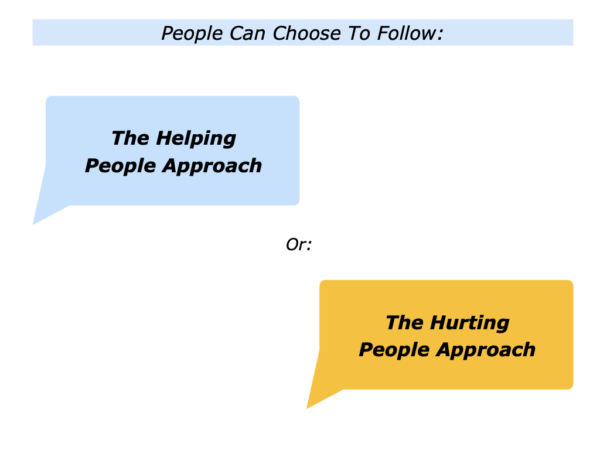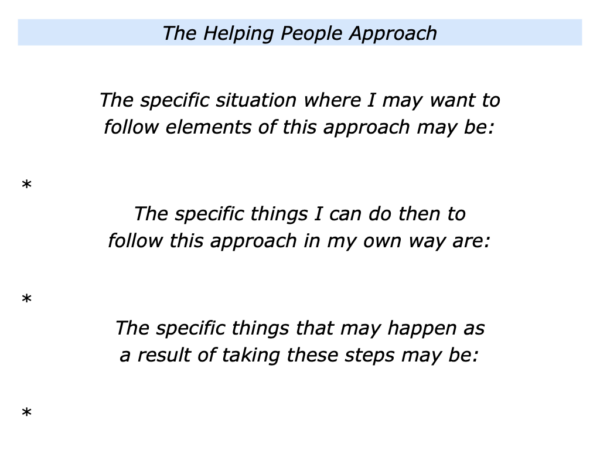
There are many ways to live life. Many people aim to follow the helping people approach rather than the hurting people approach. Let’s explore how they may translate this into action.
The Helping
People Approach
Many people grow up with this approach. They learn it from their parents, teachers or others who have encouraged them in their lives. Such people may ask themselves the following questions.
“How can I help people? How can I do work that helps people rather than hurts people? How can I encourage and enable people to achieve their goals?
“Looking at the action I am about to take, will this help people? How can I build on how it helps them? How can I minimise any ways it may hurt people?”
Some people focus on encouraging their loved ones or do work that helps people. Some aim to pass on knowledge and practical tools that help people to shape a positive future.
Some decision makers apply a certain credo when making decisions, implementing policies or taking actions. They may ask some of the following questions.
“What are the real results we want to achieve? What will be the benefits of achieving these results? What will be happening that will show we have achieved the picture of success?
“What are the potential options? What are the pluses and minuses of each option? What is the option – or combination of options – that is more likely to help people rather than hurt people?”
“What is the option we want to pursue? How can we build on the pluses and minimise the minuses? How can we do our best to – as far as possible – help people?”
Some decision makers may go through a similar process when deciding how to use new technology. These could include new inventions, energy sources, artificial intelligence or other developments. Sometimes this may come down to asking one question:
“How can we use this to help people or the planet?”
The helping approach is not always straight forwards. There will be occasions when helping some people may have negative consequences for others.
Some decision makers may therefore follow the Utilitarian model. They aim to achieve the greatest good for the greatest number. Some may aim to maximise the ways that help people and minimise any ways that may hurt people.
People who live in rich countries may also aim to do their best to help people across the planet. They may do this in the knowledge that the lifestyle they follow may hurt others.
Such individuals may then make decisions about how they can do their best to help people in their lives and work. They may also take action to minimise any ways they may hurt people.
As mentioned earlier, different people learn the helping approach in different ways. They also do it for different reasons. Some people may take another route.
The Hurting
People Approach
Some people learn this approach from key people in their lives. Some may have had uncaring parents. Some may have been taught to hate or hurt other people.
Some people are told: ‘You have to make sure that you win and other people lose.’ Some are told they are superior to others. Some are taught to scapegoat people who are different.
Let’s return to your own life and work. Looking ahead, can you think of a situation where you may want to follow elements of the helping people approach?
Who may be the person or people you want to help? How can you help them in a positive way? How can you build on the pluses of helping them? How can you minimise any of the potential minuses?
If you wish, try tackling the exercise on this theme. This invites you to complete the following sentences.







Leave a Reply